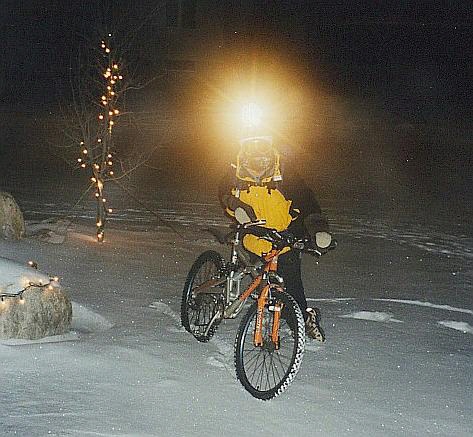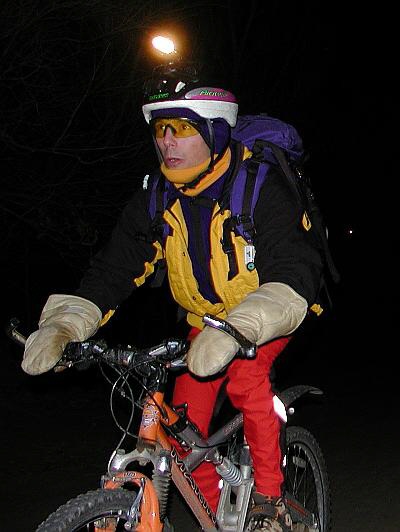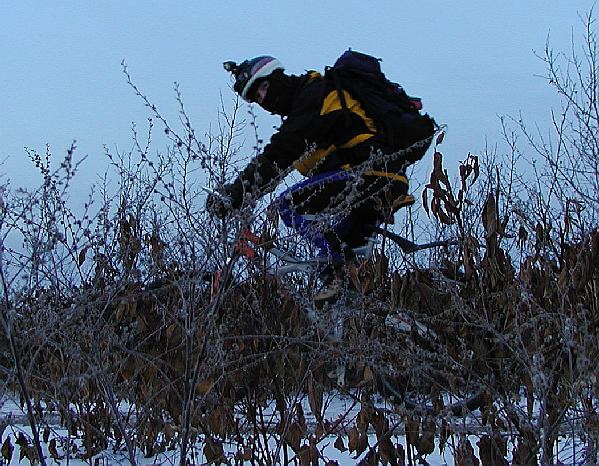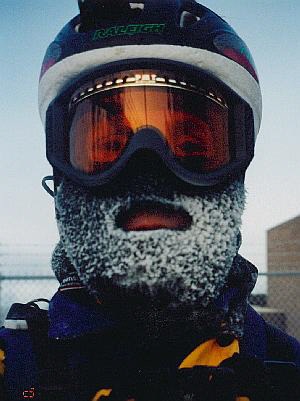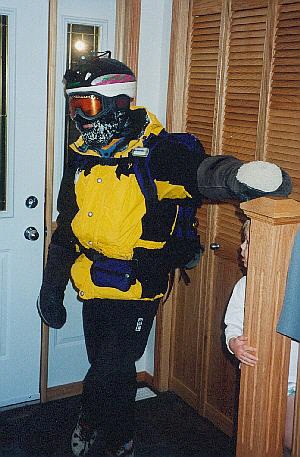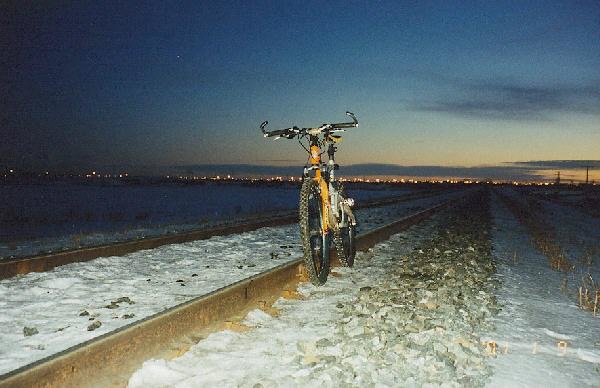 |
|
|
Maniac at work? I started mountain biking to work in 1994. This means EVERY day. No matter what the temperature (+38 to -45 degrees celsius). Not matter what the weather (heat waves to blizzards). No matter what the wind (60 kph headwinds!). I feel I have no excuse not to do so. It is only about 6 km, and would be a huge waste of gas to take a vehicle. Time wise, it only takes 10 minutes longer than a car. Indeed, in winter the car has just barely gotten warm by the time I would arrive at work. In order to make sure that I always bike, we do not have a second vehicle. My wife takes the car, and I am left to bike. There is no incentive like no alternative. I like the arrangement and feel virtuous about it! How do you get used to riding in the winter? I really like the comment from IceBike. "The easiest way to start winter biking is don't stop." You will have lots of time to adapt as the weather slowly changes. You will have time to learn from your mistakes without frostbite too! Clothing: Most of the time, I arrive at work bathed in sweat. More so in winter. It is difficult to dress just right. Summer is easy, just a shorts and a T-shirt. Then as the weather gets colder, I just add more layers. I never wear more than a T shirt, 2 fleeces and a goretex jacket. Even at minus 40, that is usually too much, and I leave the jacket unzipped. I never do up the pit zips. Goretex may breath, but nowhere near enough. I am not complaining about it. In fact, I once wore a simple rainjacket in minus 20, and it was soaking wet on the inside upon arrival at work. Never again. Even though I don't feel goretex breathes well, it is SO much better than a non-breathing nylon jacket. Over time I have developed some basic guidelines. Note that I know almost nothing about cycling in the wet. It just doesn't rain much here, and the transition to winter is FAST. Very little time for wet snow.
Wind can make me wear more stuff, but not as much as you would expect. I am already dressed for wind just by being in biking clothes. Windchill is always there. In really cold weather with high winds I wear ski goggles, but for most of the year, they are overkill. It takes a lot of airflow to stop them from fogging/icing up. Bizarrely, as soon as I have to start covering my mouth and nose, I need to expose my eyes. I have been unable to find glasses which do not ice up because of hot breath being redirected up. Some examples follow.
-10 Still just thin tights, but BIG gloves!
-20 FaceMask, but had to lose the eye protection
-35 Somehow made it to work without frosting up my goggles. The buildup of frost on your clothes is common. Just condenstion from your breath. -40 degrees in the dark. Goggles are iced up! Commute in the city vs in the country? My ride to work has changed. For 10 years we lived in an old house in the Broadway area. The ride to work was along heavily tree-d streets, then across campus and to work. We have now moved to a new subdivision. My ride is across much more open fields, and I have a long stretch where I ride along a small footpath alongside some railway tracks. In winter, these become unrideable and I am forced up onto the railway tracks, where I bump along the side of them. The wind tends to keep the tracks clear, and except in the middle of a big blizzard I have been able to ride. The big blizzard managed to pile up and pack 6" of snow. Even when I managed to get going, the wind blew me sideways into the deep snow, or into a rail where my progress stopped. I pushed the bike a lot that day.
Looking back towards home,and a sunrise Tires: I stubbornly resisted getting studded tires. Most of my winter cycling is on packed snow and ice. As long as there is a little dusting of snow, then the ice isn't too bad. But, last year after a solid month of slick glare ice (the kind of stuff you can't even walk on!), I finally went out and bought some. Wow, what a difference. My years of practice without studs must have really helped, because I only had one wipeout for the rest of the winter. Icicles had created a sideways slope to a narrow walkway. Slick and nothing to do but crash. Studs did leave nice gouges all down the side of the slope though. For my front tire, I chose a tire with studs that were constantly in touch with the ground. I want the traction before I get leaned over. On my rear tire, I have the more common sheet metal screws screwed into the lugs of thre tire. These don't come into contact with the ground until you are leaned over a bit. I could use more flotation though. A wider tire on both ends of the bike would be better. My front is the big problem, being a little too rounded which means that it drops down into packed snow unexpectedly. Most of the time, it feels like a snall ridge of packed snow builds up under the tires, creating a little ridge that you ride on. Being on top of a ridge means that there is a considerable tendency for the tires to slip/fall off of it, which leads to lots of wild fishtailing at both ends of the bike. Sometimes you recover, sometimes you don't. I suspect that wider tires would help with this. |
|
|
|
Email me! warren.long@shaw.ca Click on photos with a border for a bigger one! ******* |


